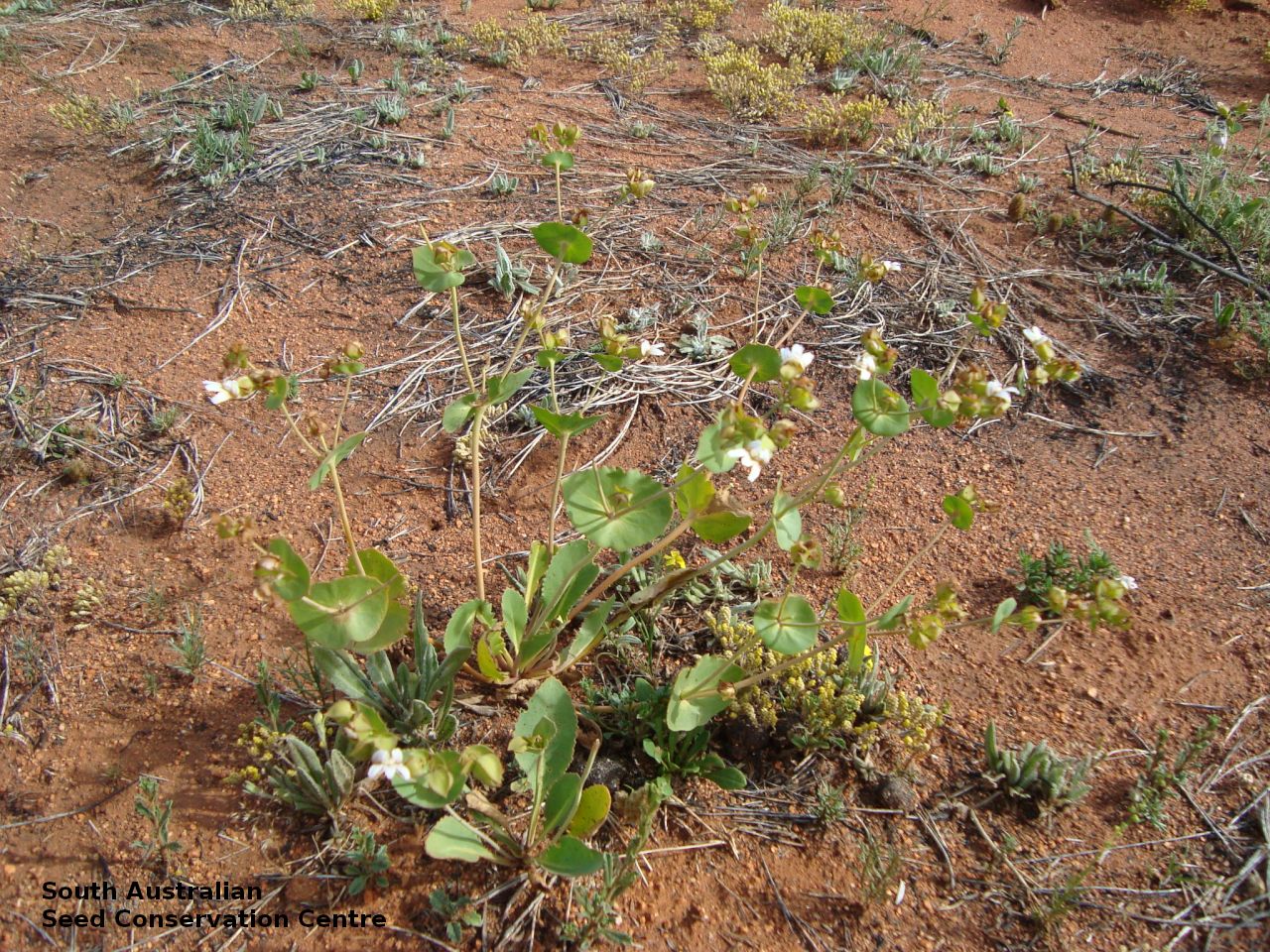
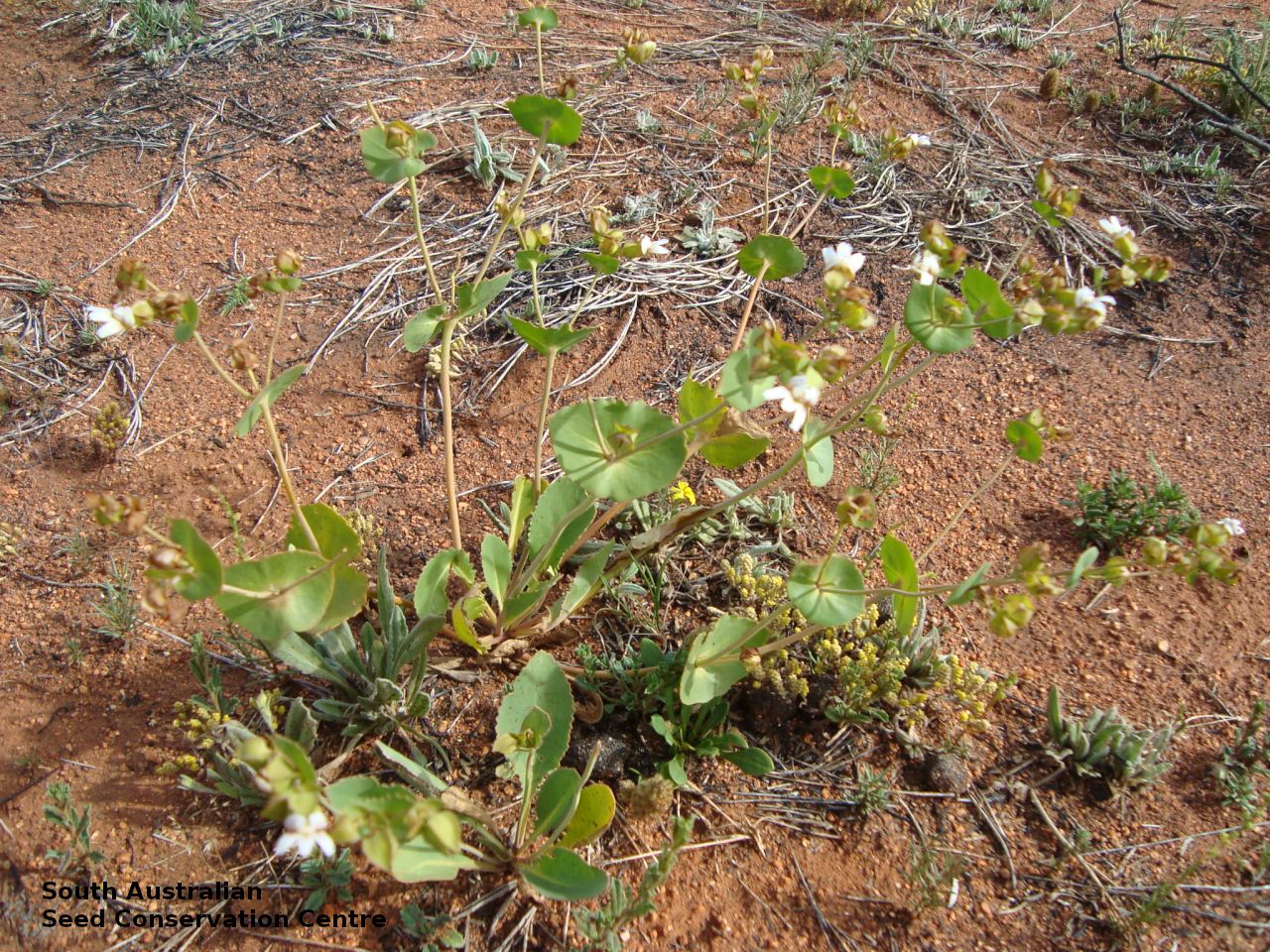
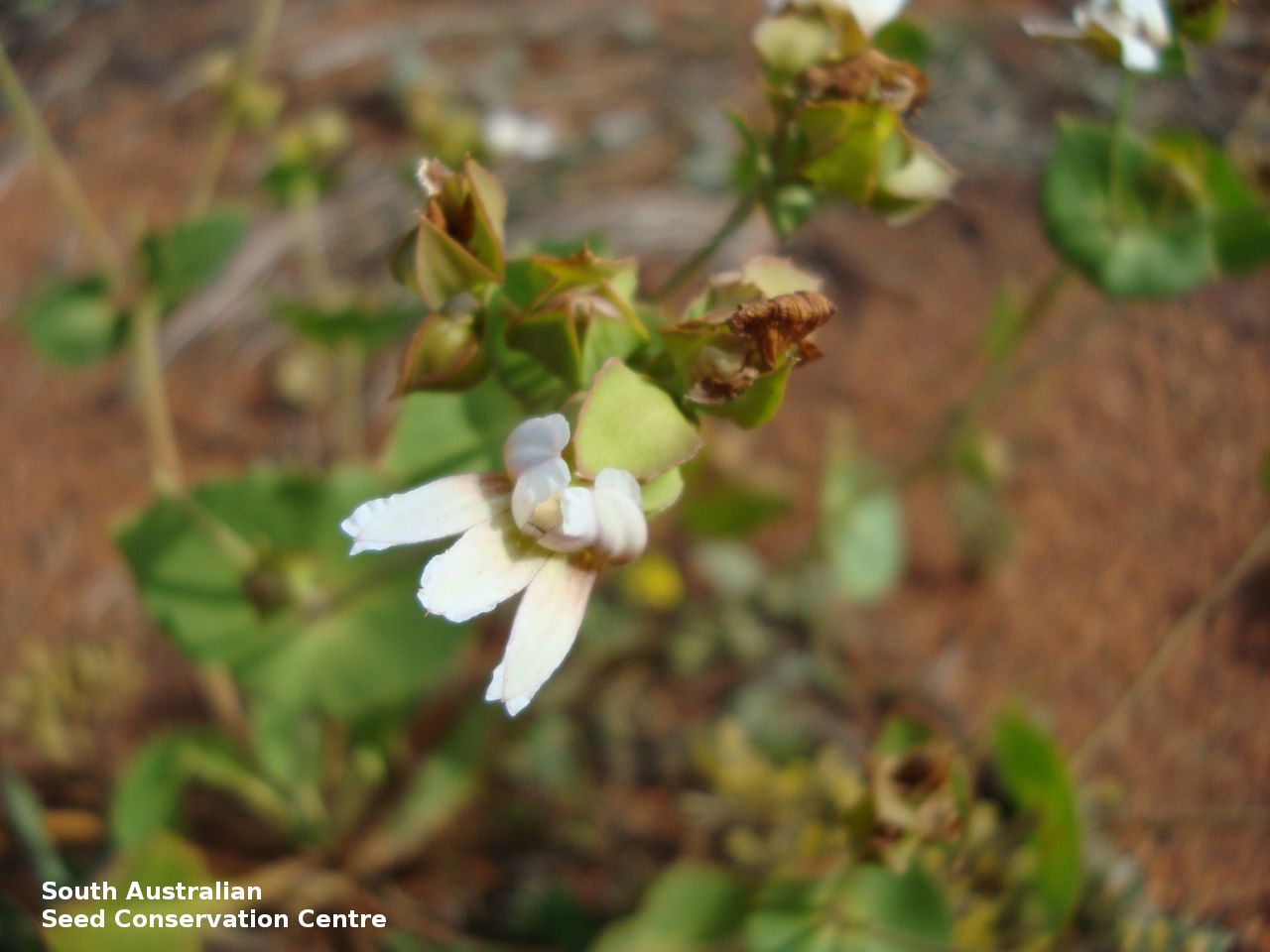
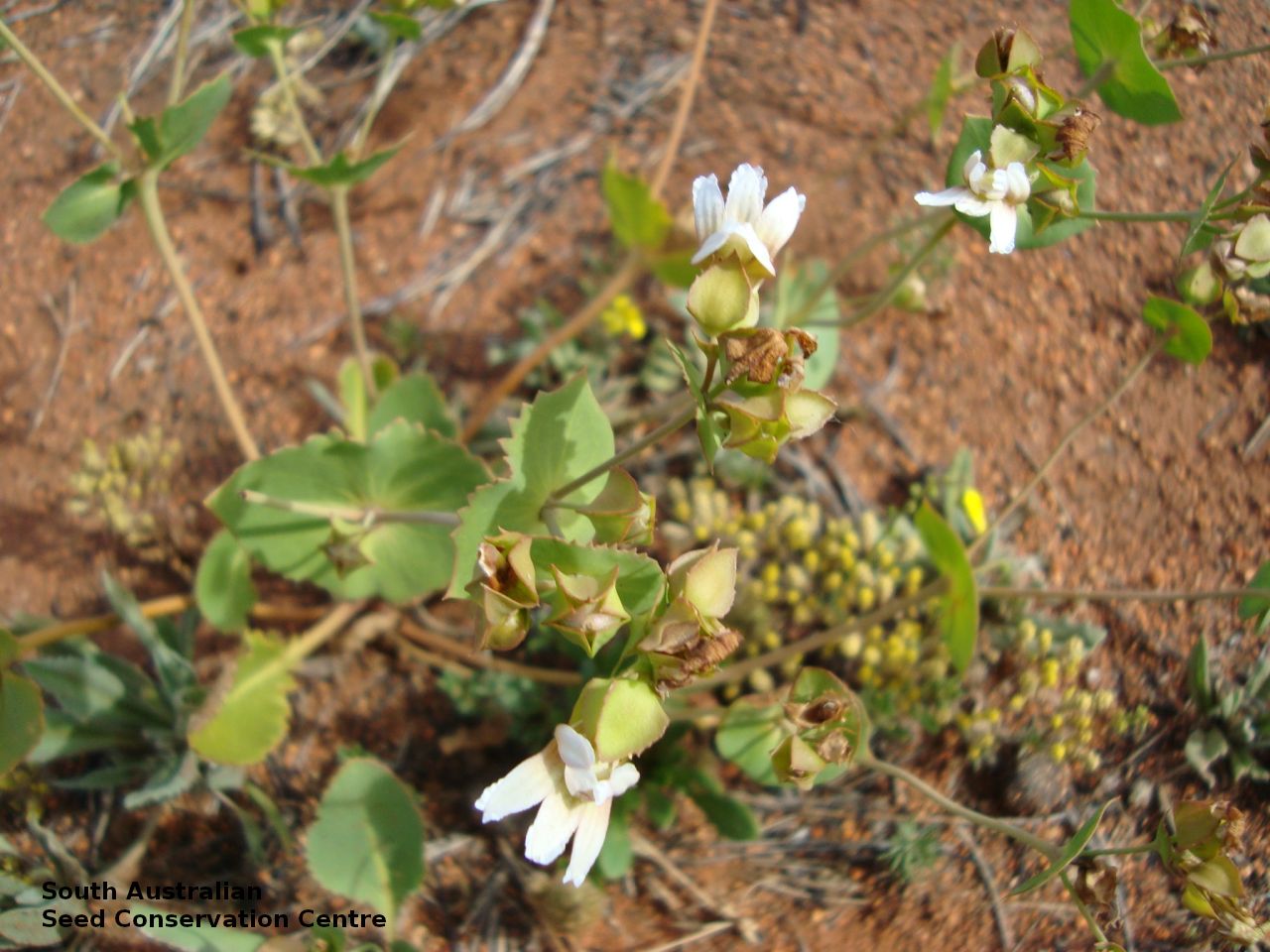
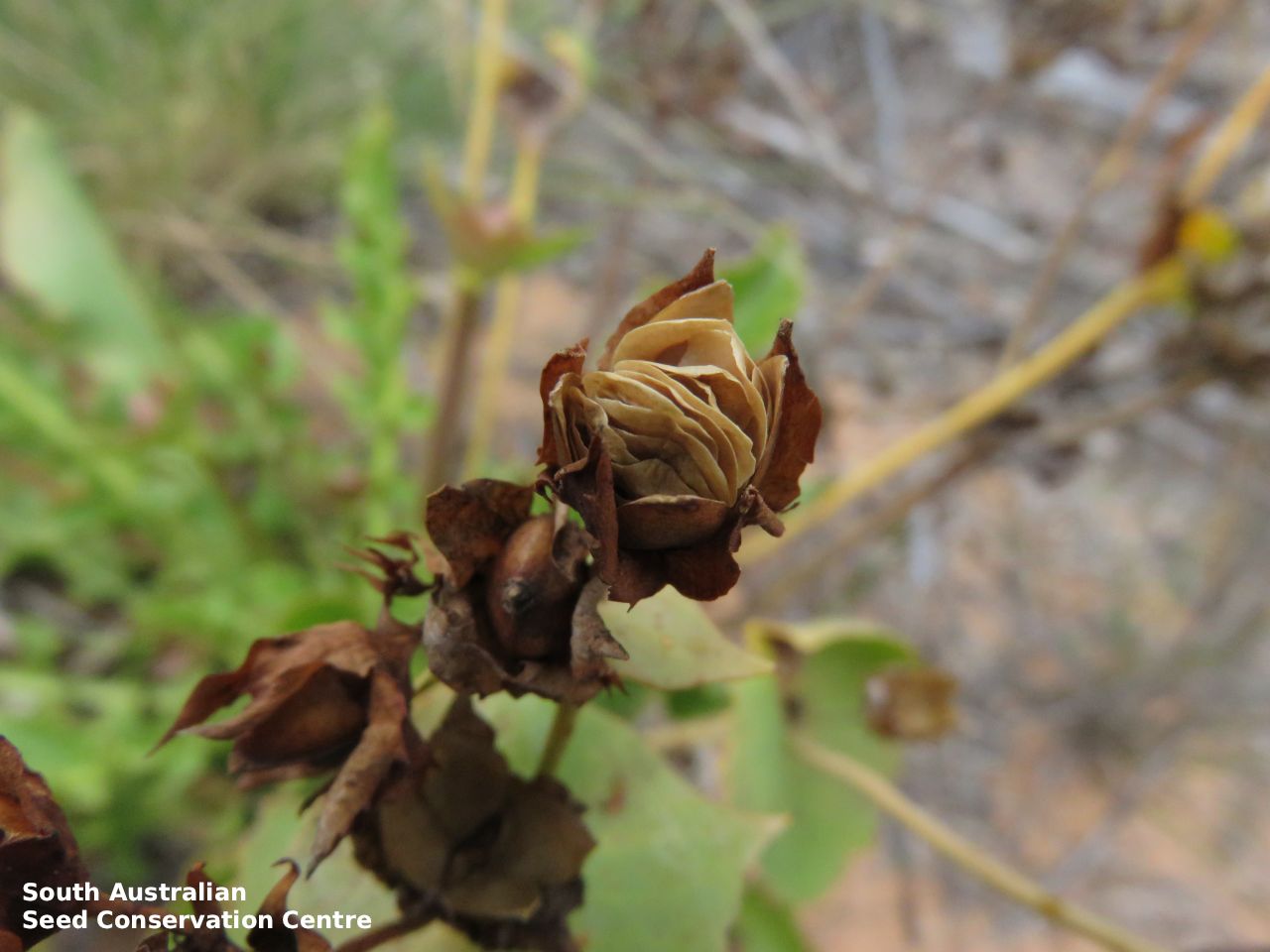
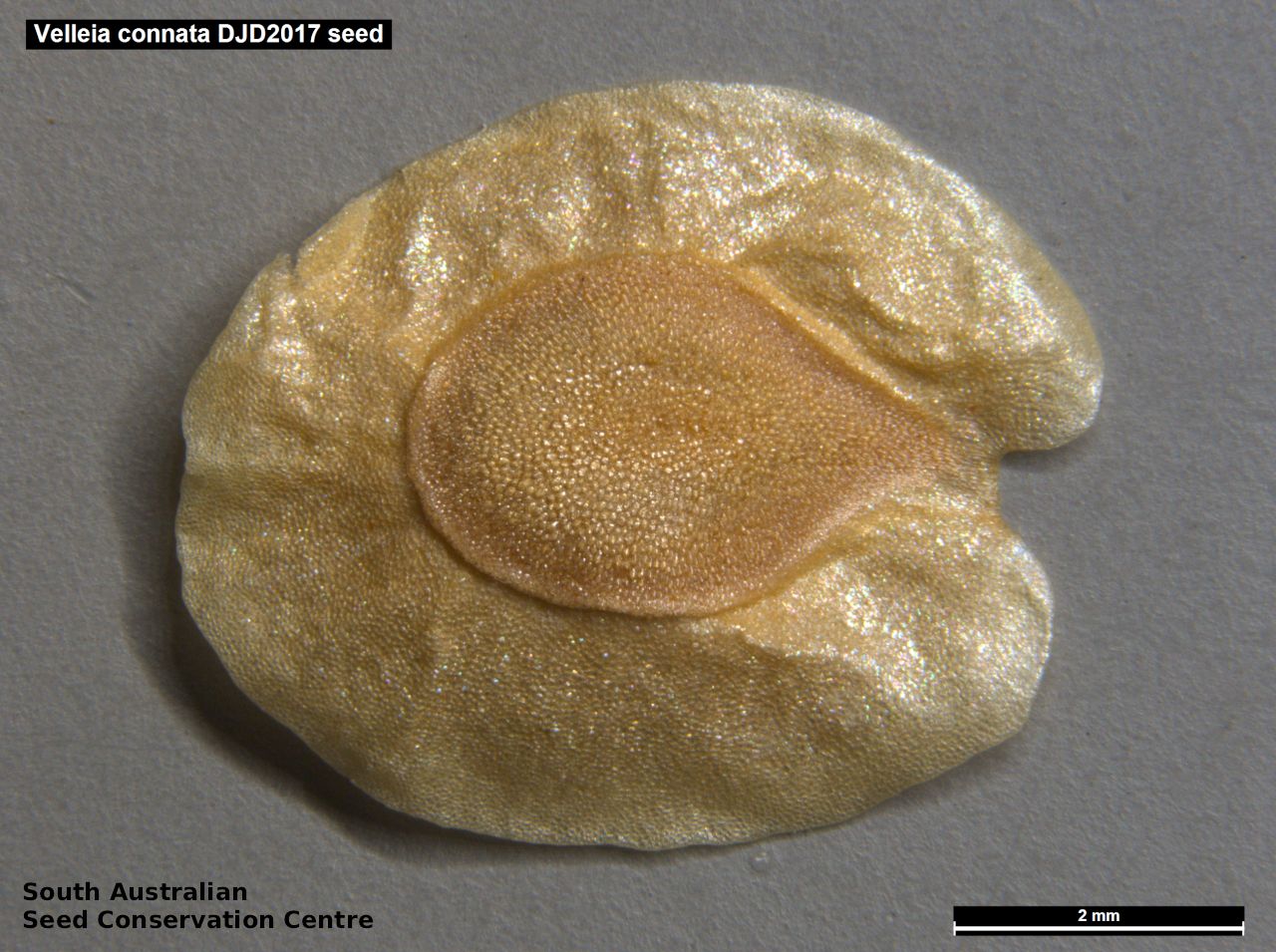
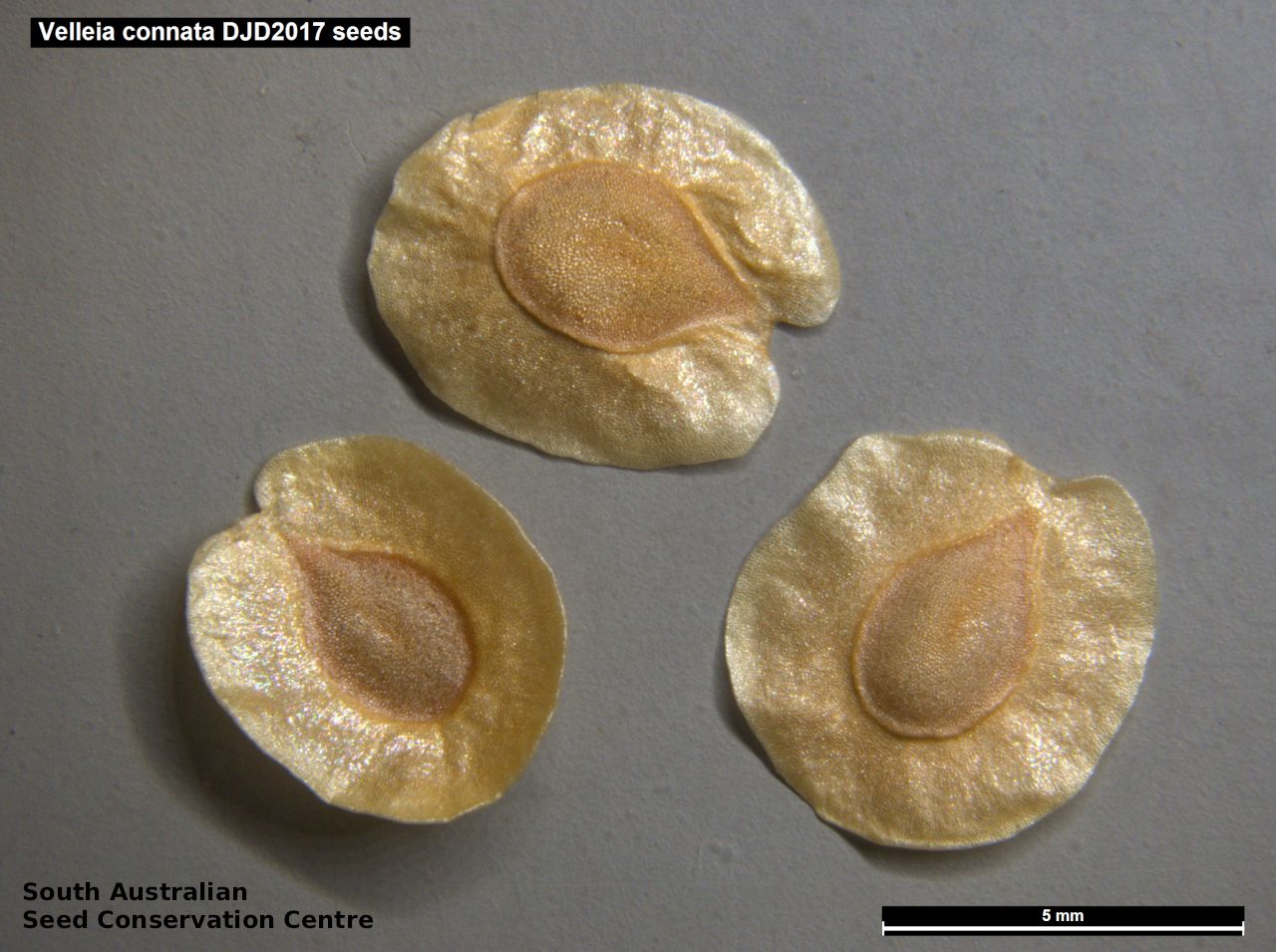
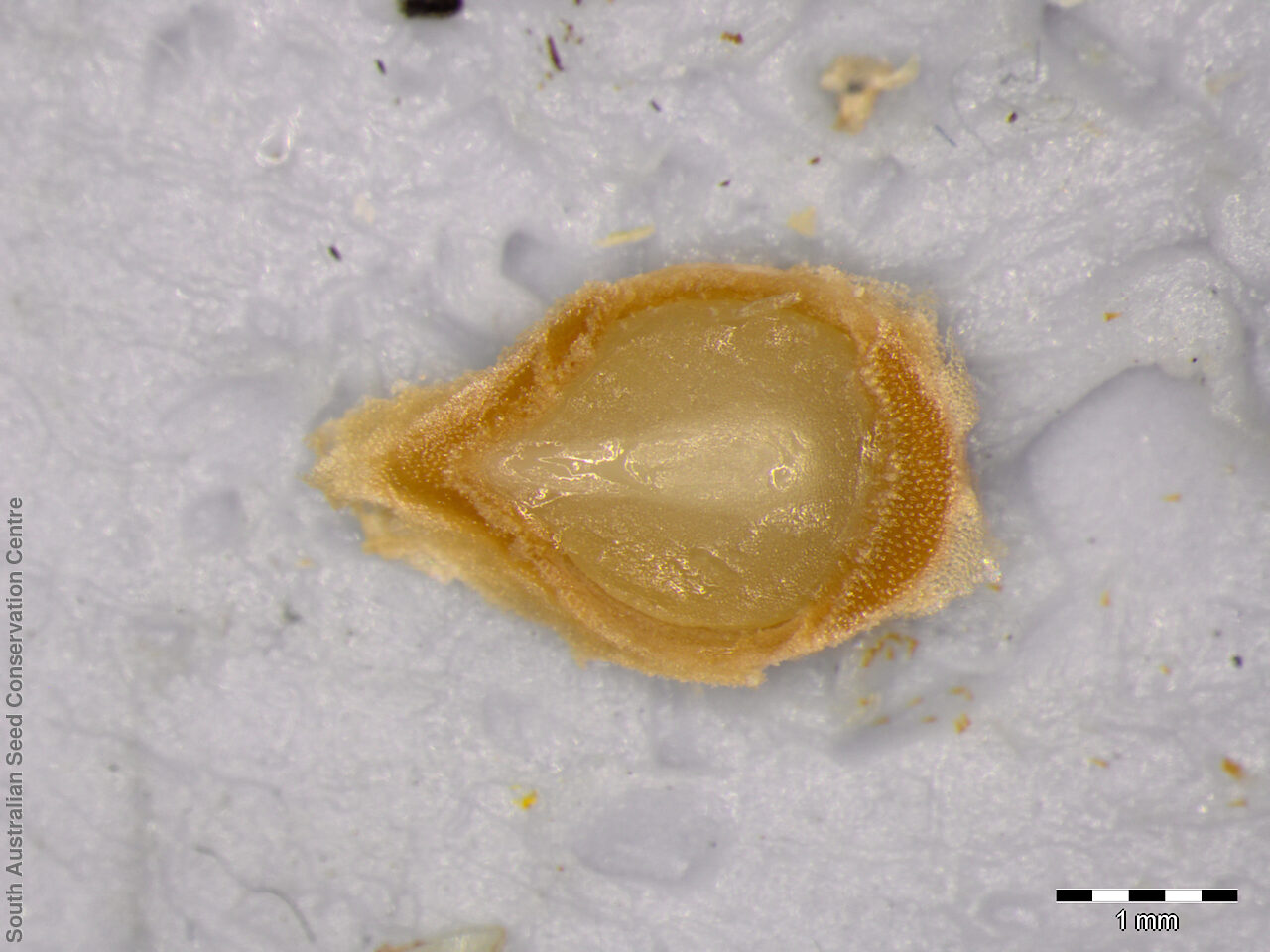
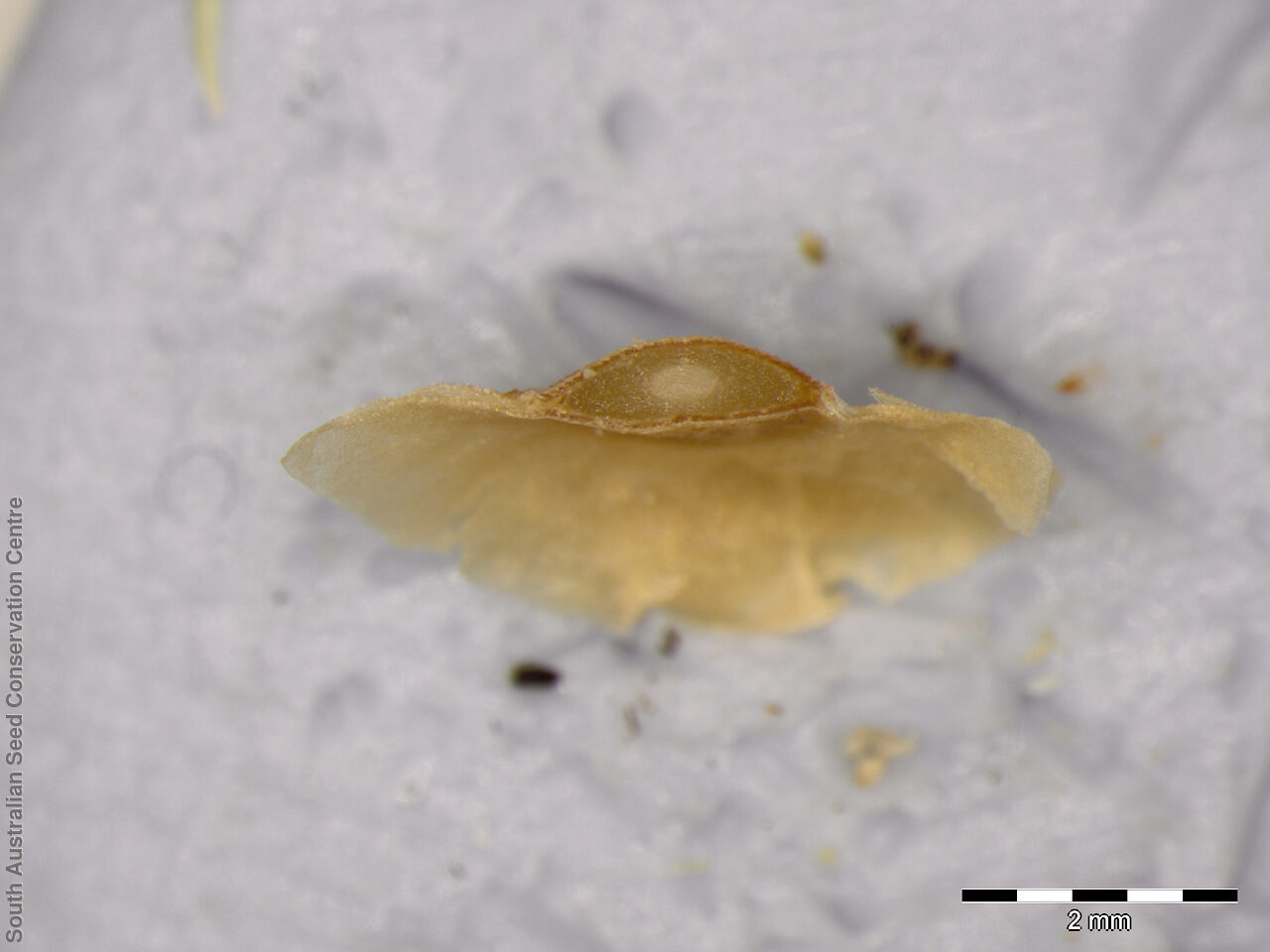

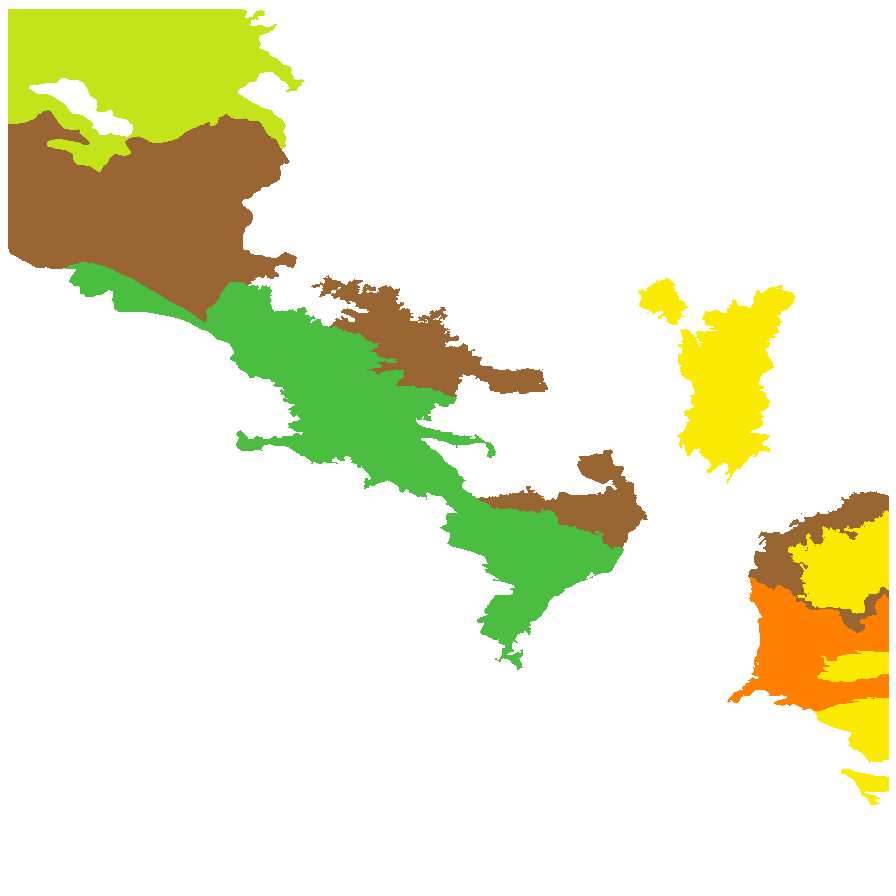
Botanical art
Prior names
Velleia connata
Velleia helmsii
Common names
Stout Velleia
Cup Velleia
Etymology
Goodenia named after Samuel Goodenough (1743-1827), an Bishop of Carlisle, an amateur botanist and collector and vice-president of the Royal Society (formally Velleia named after Thomas Velley (1748-1806), an English botanist). Connata meaning fused together; referring to the fused bracteoles around the flower.
Distribution and status
Discontinuous distribution from the far north-west to the south-east in South Australia, often growing in drier grassland, mulga and mallee communities on sandy soils. Also found in all mainly States. Native. Common in South Australia. Rare in Victoria. Common in the other states.
Herbarium regions: North Western, Nullarbor, Gairdner-Torrens, Flinders Ranges, Eyre Peninsula, Murray
NRM regions: Alinytjara Wilurara, Eyre Peninsula, South Australian Arid Lands, South Australian Murray-Darling Basin
AVH map: SA distribution map (external link)
Plant description
Annual herb to 90cm high. Leaves oblanceolate to spathulate, denticulate to lyrate-pinnatipartite, green, glabrous, to 20 cm long and 8 cm wide forming a rosette. Inflorescence a scape to 60 cm high, bracteoles fused into a cup. Flower yellow, brown-yellow or white to pink, often with mauve markings. Flowering between September and January. Fruits are brown compressed-ovoid, 4-valved capsule to 8 mm long, glabrous or subglabrous with a minute mucro. Seeds are brown, flat, broad-elliptic to orbicular seed to 6 mm in diameter, with a pointy end and wing around the margin. Seed embryo type is spatulate fully developed.
Seed collection and propagation
Collect seeds between November and February. Collect pods that are maturing, turning brown, easily split open and with brown seeds inside. Place the pods in a tray and leave to dry for a week. Then rub the pods with your hands to dislodge the seeds. Use a sieve to separate the unwanted material. Store the seeds with a desiccant such as dried silica beads or dry rice, in an air tight container in a cool and dry place. From one collection, the seed viability was high, at 100%.
| Location | No. of seeds (weight grams) | Number of plants | Date collected | Collection number Collection location | Date stored | % Viability | Storage temperature |
|---|---|---|---|---|---|---|---|
| BGA MSB | 6,400 (12 g) 6,400 (21 g) | 40 | 7-Dec-2010 | DJD2017 Murray | 1-Jan-2012 | 100% | -18°C |
Number of plants: This is the number of plants from which the seeds were collected.
Collection location: The Herbarium of South Australia's region name.
% Viability: Percentage of filled healthy seeds determined by a cut test or x-ray.